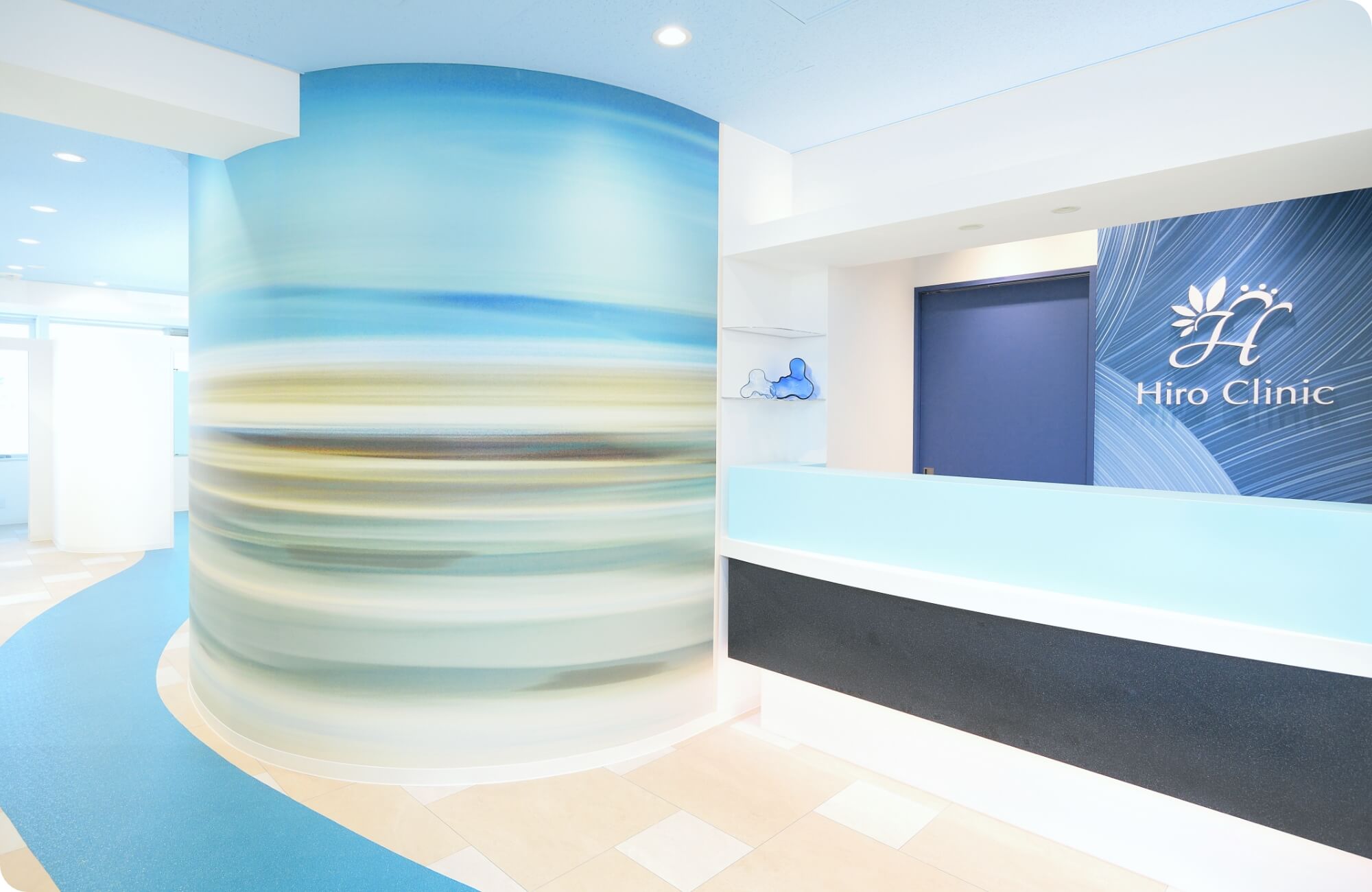
Tokyo Baby’s Head Clinic
2023.05.05
専門外来トピック
Your Baby, Your Helmet Therapy
“My persistent passion as a pediatric neurosurgeon”
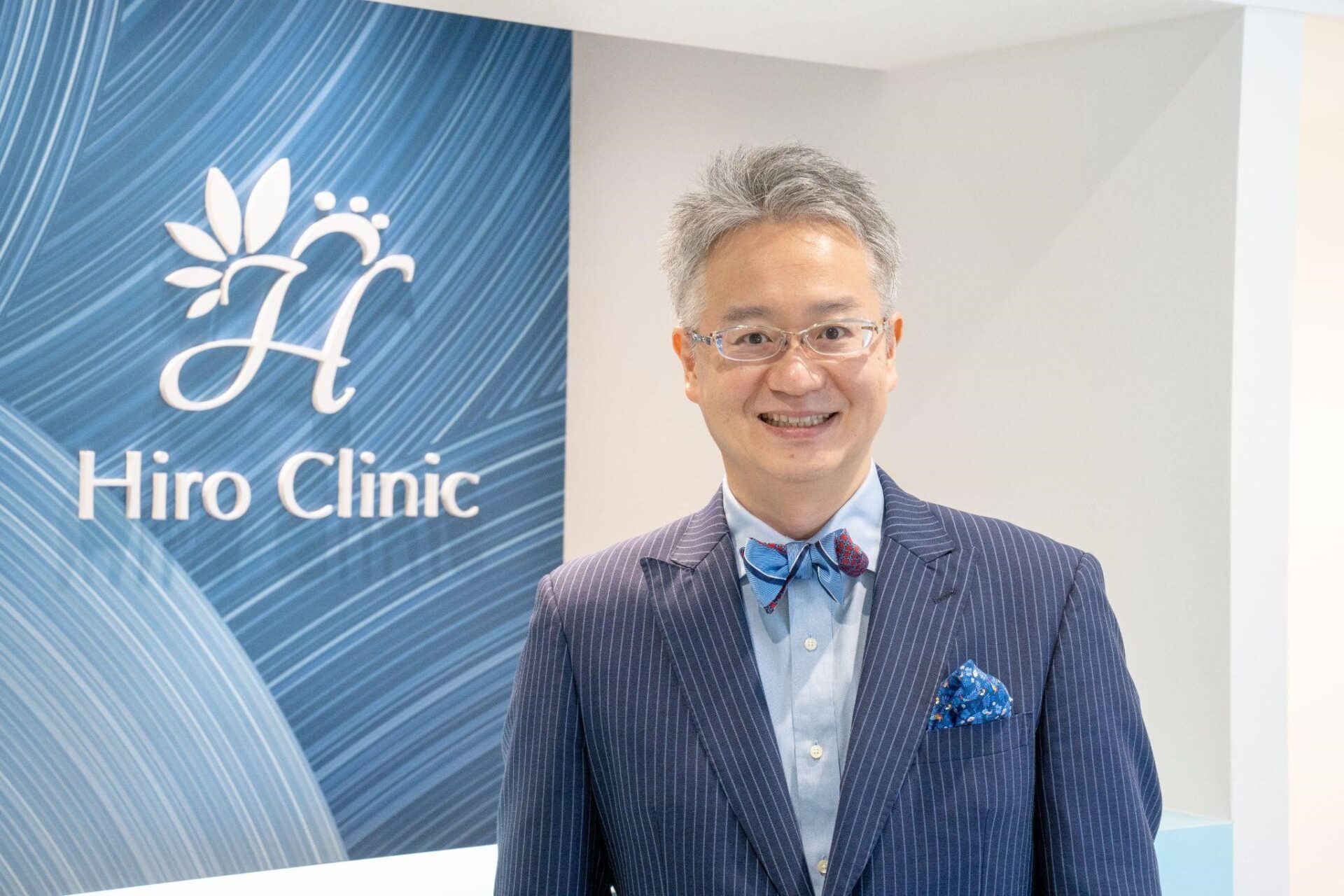
What kind of patients come to your medical consultation?
The majority of our consultations come from mothers who spend the most time with their children. They may
have concerns such as their child’s head shape not being symmetrical, the back of their head appearing flat, or
their ears being positioned unevenly. Many parents have struggled with these worries and have been told things like
“It will naturally improve as they grow,” “Their head is just tilting to one side,” or “Try putting toys on the
opposite side.”
Despite their efforts, the situation does not seem to improve. Our Head Shape Clinic aims to address these
concerns and help children achieve a more aesthetically pleasing head shape.
Tell me about your priority at the Baby’s Head Clinic.
Firstly, we will listen to you carefully. I have been working in pediatric neurosurgery for a long time and I
was surprised to find that many people feel a strong sense of hesitation about the examination itself, such as “the
head helmet is expensive” and “it’s difficult to consult”. Many people were also under the impression that surgery
was recommended or that helmet wear was absolutely necessary following consultation. Based on my many years of
experience in medical treatment, I am keenly aware that we in pediatric neurosurgery need to create more
opportunities and places to provide more “accurate” and “appropriate” information to those who need it most.
Moreover, many people are working hard at both their jobs and raising their children, and we often hear
opinions that they cannot visit the clinic except on weekends or holidays, or during specific hours.
At our clinic, we operate on a “completely reservation-only” basis, and we are available on weekends and holidays.
If it is difficult for you to come during the day or in the evening, we also offer night-time consultations. Please
feel free to consult us.
Do we have to wear a helmet once we visit your baby’s head clinic?
First, an experienced pediatric neurosurgeon confirms that it is not a rare disease requiring further
investigation or surgery. After that, we will consult with you on whether to start treatment with helmet wearing.
Please be assured that wearing a helmet is not mandatory. We will propose a treatment plan tailored to each
individual’s lifestyle and environment.
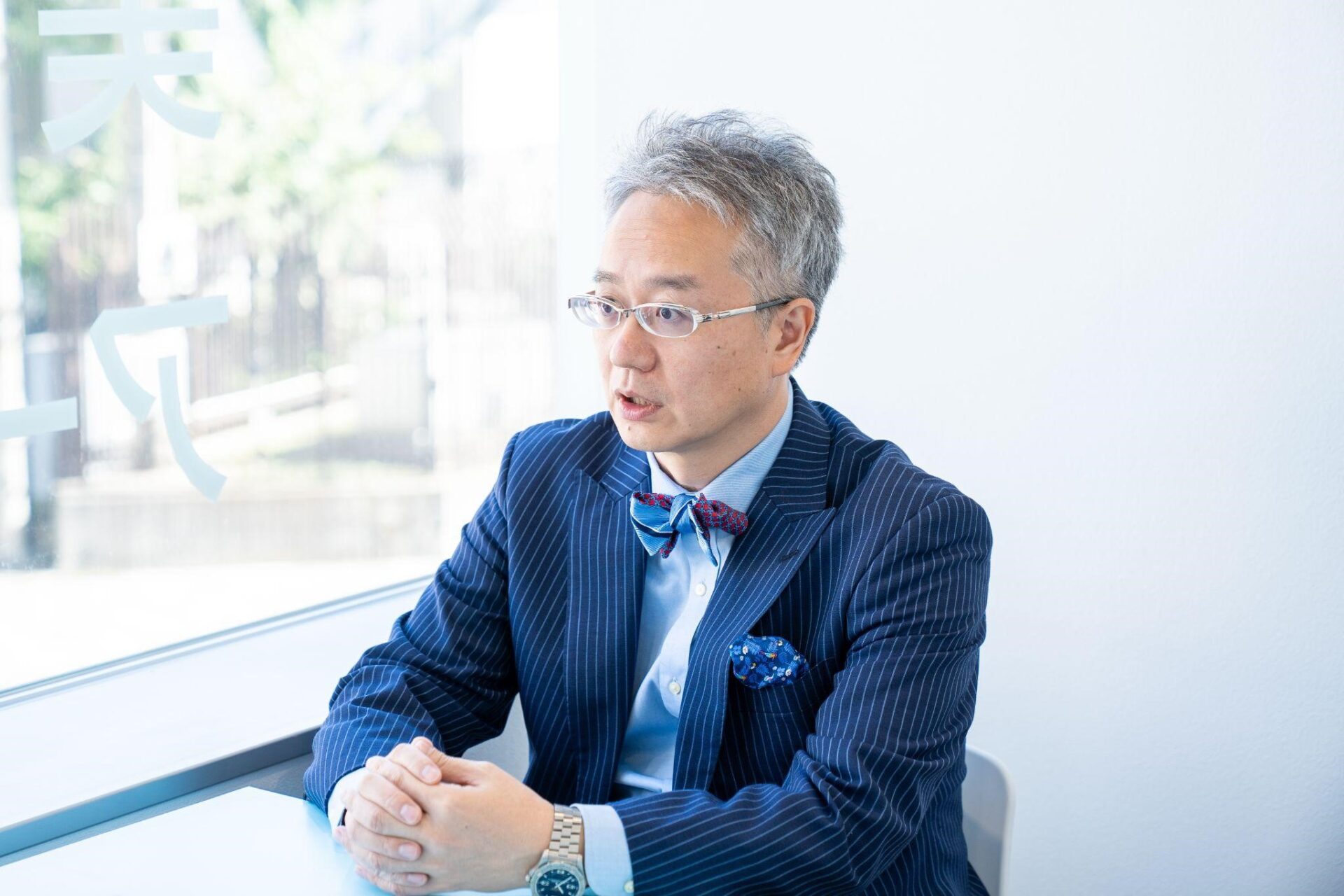
Please tell me about the process after the doctor’s consultation.
Let me explain about the application of helmet therapy. By having your baby wear a special helmet constantly
while their bones are still soft, we can gradually bring their head closer to an ideal shape. This helmet is made to
order based on each individual child’s 3D data. It aims to achieve the ideal head shape that fits each child, rather
than using pre-made products.
This treatment is highly effective, but it is not effective if started after the bones of the head have
become too hard. In addition, it is known that the earlier the treatment starts, the higher the treatment
effectiveness.

I heard that if the shape of the head is not corrected, it can affect development. Can you please explain this in detail?
This is a very important point, but the goal of the head shape clinic is purely to change the appearance of the children. Even if the shape of the head is uneven, there is no concern that it will have an impact on intelligence or brain development. Also, there is no scientific evidence to suggest that improving the shape of the head will lead to better intelligence.
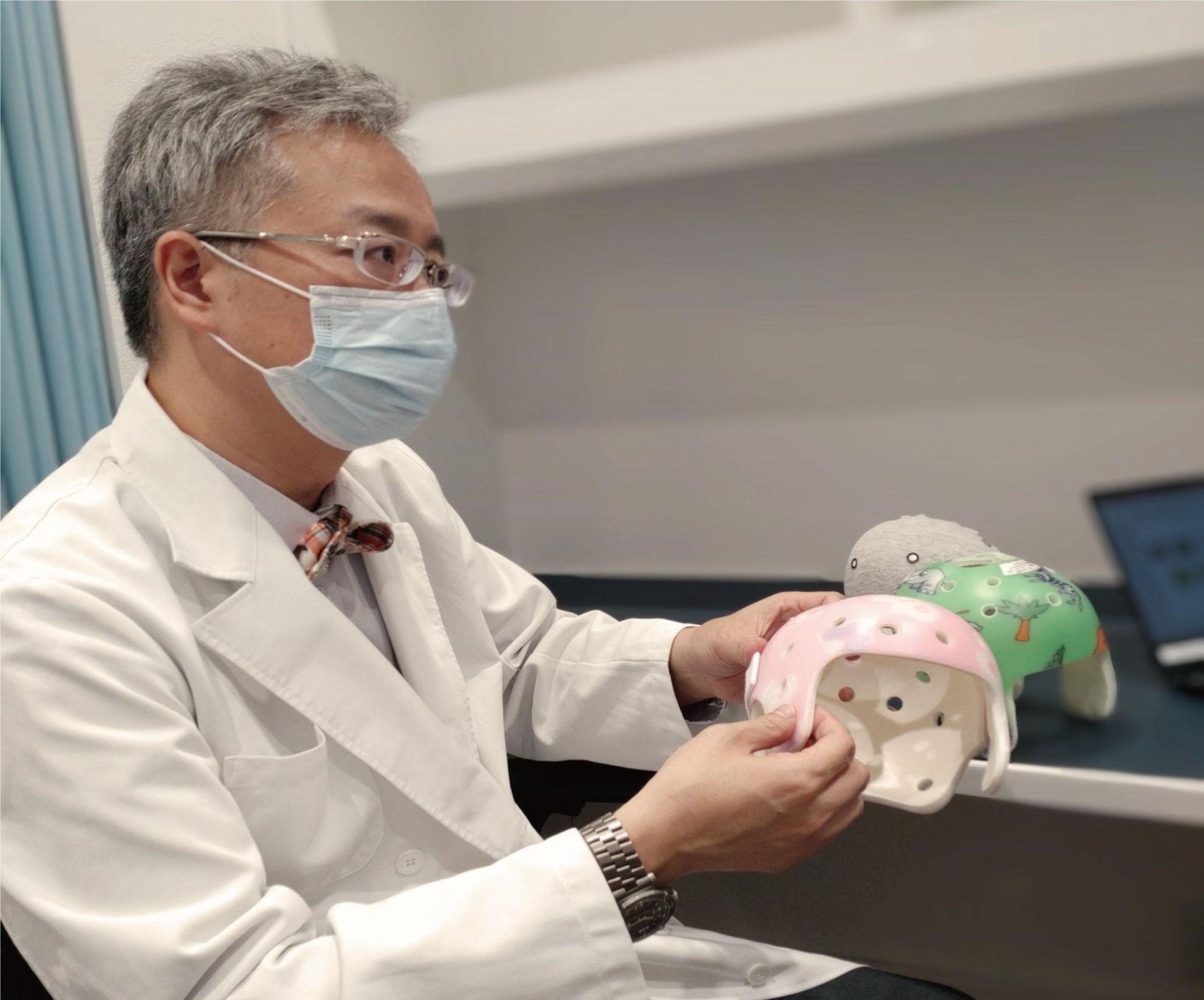
Please tell us about your “persistent passion” as a certified pediatric neurosurgeon?
What significance does improving a child’s appearance hold, and is it appropriate to consider it in the same way as adult cosmetic surgery? I believe that the shape of a child’s head is a very important issue that should be taken seriously. Children are more concerned about each other’s appearance than adults are. For children with a future ahead of them, it is essential that they cultivate a sufficient “self-esteem” through healthy emotional growth. I believe that the shape of a child’s head is one of the crucial elements in achieving this goal.

Friquent questions Q&A
Q: I heard that the bones in the skull are a combination of several types of bones. Can you explain in detail?
A: The skull is composed of eight bones that form a dome surrounding the brain stem during
infancy. In adults, the skull bones are all connected to each other by nearly immovable joints called sutures.
However, in infants, fibrous sutures are formed but not yet fused. This fusion process typically occurs around the
age of 2-3 years.
The unfused bones allow for rapid growth of the brain to occur. Brain growth begins during fetal development, and
the brain weighs about 300 grams at birth. By six months of age, it has doubled in weight, and by two years old, it
has tripled. It is known that by the ages of 4-6 years old, the brain approaches about 95% of the weight of an adult
brain (1200-1500 grams).
Q: What is the definition of head deformity?
A: The term “head deformity” is widely used, but there is currently no unified definition. Overseas, there is a common name called “baby misshapen head,” but the group of conditions included there is diverse.
Q:Is there another term used to refer to ‘head deformity’?
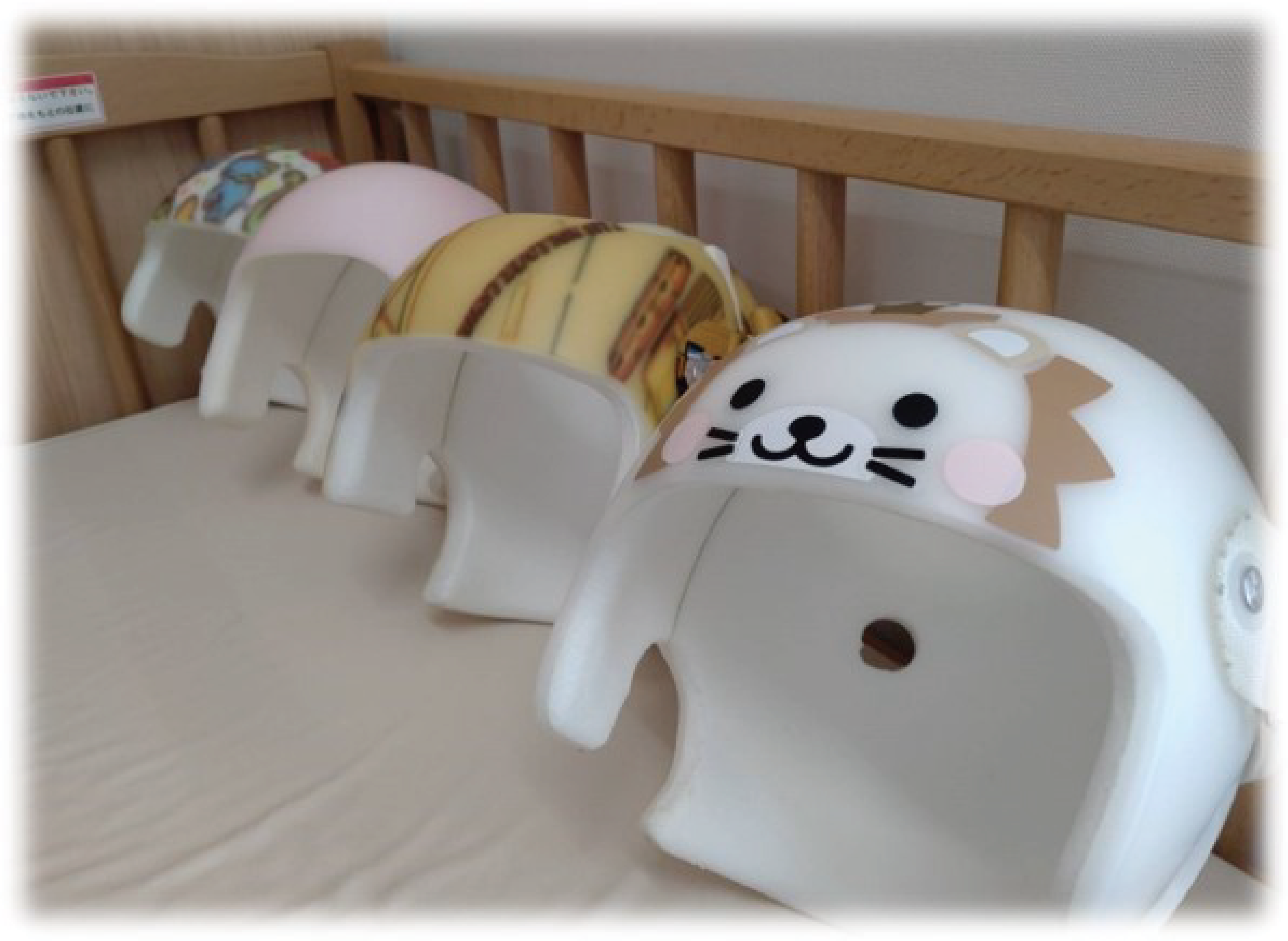
A: The name for head deformity varies depending on the type of deformity. It is referred to by various names, such as positional skull deformity, positional head deformity, oblique head, plagiocephaly, and others. The common name “misshapen head” is also frequently used. Because the causes of head deformity include a variety of conditions, there are multiple names in use to describe it.
Q:What is the frequency of head deformity?
A:In early infancy, it has been reported to be observed in approximately 40% of babies, but as there is no unified definition of head deformity, the reports vary widely depending on the paper.
Q:Is there any reason why head deformity has recently gained attention?
A: In 1992, the American Academy of Pediatrics (AAP) launched a major campaign called “Back
to Sleep,” which aimed to reduce the incidence of SIDS (Sudden Infant Death Syndrome), a social problem at the time,
by placing infants in a supine position when sleeping. 1)
Thanks to this campaign, a decrease in the mortality rate was observed between 1992 and 2000. However, on the other
hand, flattening of the back of the head has become problematic.2)
Since 1992, the incidence rate of positional skull deformity has been reported to be four times higher. In the
United States, it has been reported that one out of every 60 babies has head deformity.
1. American Academy of Pediatrics AAP Task Force on Infant Positioning and SIDS: Positioning and SIDS. Pediatrics 1992;89(6 Pt 1):1120-6.
2. Diagnosis and Management of Positional Head Deformity, Wendy S.Biggs, M.D.,University of Michigan Medical School, Ann Arbor, Michigan; American Family Physician, VOLUME 67, NUMBER 9 / MAY 1, 2003
Q:Why is supine sleeping recommended?
A: As Sudden Infant Death Syndrome (SIDS) became a social issue, the risk of “prone sleeping” became widely known. As a result, “supine sleeping” was recommended, and this is how it came to be promoted.
Q:How does cranial deformation change depending on the age of the infant?
A: According to data from 2017, the incidence of cranial deformation is reported to be
highest around three months of age. It can be confirmed from the table below that cranial deformation has decreased
with appropriate intervention (Preventive counselling group).1)
It has been found that positional cranial deformation improves after the infant achieves consistent neck control.

1)DEFORMATIONAL PLAGIOCEPHALY: PREVALENCE, QUANTIFICATION AND PREVENTION OF ACQUIRED CRANIAL ASYMMETRY IN INFANTS, Henri Aarnivala, May 2017
Q:What are the types of cranial deformation?
A: Cranial deformation is classified into categories such as plagiocephaly, brachycephaly, and scaphocephaly. Plagiocephaly is the most common type. It is characterized by the movement of the ear on the same side as the deformation forward, the protrusion of the same side of the forehead, and flattening of the back of the head, all resulting from positional cranial deformation. It is important to differentiate craniosynostosis, a condition that causes cranial deformation, from positional cranial deformation. Craniosynostosis is a congenital abnormality and should be considered as an entirely different disease concept from positional cranial deformation.

1)DEFORMATIONAL PLAGIOCEPHALY: PREVALENCE, QUANTIFICATION AND PREVENTION OF ACQUIRED CRANIAL ASYMMETRY IN INFANTS, Henri Aarnivala, May 2017
Q:Tell me the causes of cranial deformation.
A: First, it is necessary to consider the causes of cranial deformation before and after
birth. Pre-birth risk factors include abnormal fetal position (pelvic or transverse), multiple pregnancies (twins,
triplets, etc.), and abnormalities in uterine shape. The baby’s head is very fragile, and the conditions during
delivery have a significant impact. It is known that physical external forces on the fetus in the uterus can cause
cranial deformation even before birth.
Post-birth risk factors include premature birth, being a first-born, sleeping in a supine position, and being
small-for-date. The frequency of cranial deformation is higher in cases with motor impairments such as cerebral
palsy and muscular torticollis, due to difficulties with head flexion, extension, and rotation.
Q:I heard that premature infants are more likely to develop cranial deformation. Is this true?
A: Premature infants are known to be a risk factor for cranial deformation.1)
1) Littlefield TR, Kelly KM, Pomatto JK, Beals SP. Multiple-birth infants at higher risk for development of deformational plagiocephaly. Pediatrics 1999;103:565-9.
Q:What are the risk factors for cranial deformation before birth?
A: Premature birth, hypotonic muscle disorders, congenital torticollis, intrauterine constraint (such as multiple pregnancies, oligohydramnios, etc.) are known to be risk factors for cranial deformation before birth.
1) Littlefield TR, Kelly KM, Pomatto JK, Beals SP. Multiple-birth infants at higher risk for development of deformational plagiocephaly. Pediatrics 1999;103:565-9.
Q:When I look on the internet, I come across the term ‘anterior fontanelle.’ What is it?
A: The “anterior fontanelle” is a diamond-shaped gap in the bones located at the front of the
skull. The size of the anterior fontanelle is approximately 5 cm in infants from 0 to 6 months of age, 4 cm from 6
to 9 months, and 3 cm in infants between 9 and 12 months old. It usually closes around 18 months of age (between 7
to 15 months after birth).

In conditions such as intracranial hypertension, the tension of the anterior fontanelle can become high, and other
suture lines may also separate. During pediatric health check-ups, the anterior fontanelle, posterior fontanelle,
and the palpation of the skull sutures are examined.
Q:How is cranial deformation measured?
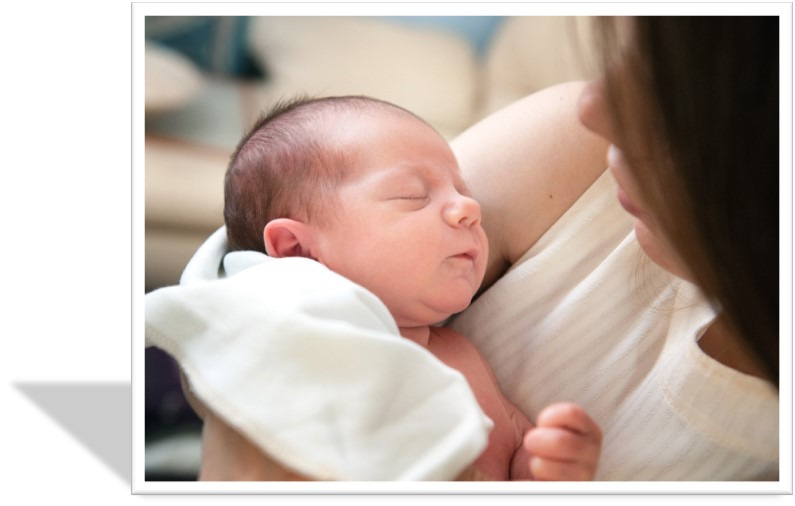
A: Various indices such as Cranial Asymmetry, Cranial Vault Asymmetry Index, and Cephalic Index are commonly used to measure cranial deformation. The index used depends on the type of cranial deformation, so it is recommended to consult a specialist clinic for more information.
Q:My baby has been diagnosed with craniosynostosis. What kind of disease is it?
A: Craniosynostosis is a condition in which one or more of the sutures of the skull fuse
prematurely. It is also referred to as craniofacial synostosis or synostosis syndrome. About 4-10 out of 10,000
births are affected by craniosynostosis. The cause of this condition is not fully understood, but it is believed
that intrauterine constraint is one of the factors.1) Genetic abnormalities may also be involved. In 2022, a Dutch
study identified the FUZZY gene as a likely candidate for the causative gene of craniosynostosis, but further
research is needed.2)
Craniosynostosis can lead to abnormal brain development due to the early fusion of the skull. This can result in
symptoms such as increased intracranial pressure and skull deformities, such as scaphocephaly, trigonocephaly, or
plagiocephaly, depending on which suture is affected.
1)Website: Japan Society of Plastic and Reconstructive Surgery
2)Barrell, W.B., Adel Al-Lami, H., Goos, J.A.C. et al. Identification of a novel variant of the ciliopathic gene FUZZY associated with craniosynostosis. Eur J Hum Genet 30, 282–290 (2022). https://doi.org/10.1038/s41431-021-00988-6
Q:Please tell me what is important in screening for cranial deformation.
A: The most important opportunity for screening cranial deformities is during the one-month infant check-up. If you feel any discomfort about the shape of your baby’s head, please feel free to consult with us at any time. We understand that you may feel anxious, but some parents have been reassured by the specialist’s examination and explanation, so please do not hesitate to consult with us about any concerns you may have.
Q:” I was diagnosed with ‘positional plagiocephaly.’ What does ‘positional’ mean?”
A: The term “positional” is derived from the literal translation of the English phrase “Positional skull deformity.” Positional plagiocephaly can be improved through changes in the baby’s position or sleep position, particularly in infants who have not yet developed neck control. However, once infants are able to move their heads freely, the effectiveness of frequent position changes or stretches may diminish. The word “positional” can be somewhat misleading and may lead to a mistaken interpretation that parental inattention is the cause of the deformation.
Q:When did the helmet treatment for cranial deformities historically begin?
A: In 1979, Clarren et al. reported cases of infants under one year old with non-synostotic cranial deformities that were successfully corrected using cranial orthotic devices, including severe cases. Since then, numerous studies have emphasized the importance of early intervention for cranial deformities, and the significance of early intervention for cranial deformities is now widely recognized.

1)S.K. Clarren et al. Helmet treatment for plagiocephaly and congenital muscular torticollis
J Pediatr (1979)
Q:I was told that my baby has “torticollis”. I saw on the internet that “torticollis” can cause “positional plagiocephaly”. Is that true?
A: Both can potentially cause the other. Torticollis can lead to positional plagiocephaly, and positional plagiocephaly is also known to induce torticollis.
Q:I heard that there are various diseases that can cause cranial deformation. Please tell me about representative diseases.
A: Hydrocephalus, craniosynostosis, and syndromic craniosynostosis (such as Crouzon syndrome, Apert syndrome, Pfeiffer syndrome, etc.) are representative diseases that cause cranial deformities. The causes of hydrocephalus include arachnoid cysts, intracranial hemorrhage during childbirth (subependymal hemorrhage, subdural hematoma, etc.), abnormalities in cerebrospinal fluid absorption following meningitis, and genetic or hormonal abnormalities.
Q:When is it possible to correct cranial deformities? What is the appropriate age range for treatment?
A: If a moderate or severe degree of deformation is present from the neonatal period to around 2-3 months after birth, the likelihood of natural correction decreases significantly. It is best to consult a specialist outpatient clinic as early as possible, but the appropriate age for starting corrective treatment with a cranial orthosis is between 4 and 18 months of age. The specific timing may vary depending on the type of orthosis, so the specialist will determine the appropriate time to start treatment after conducting an examination.
Q:I heard that there is a “natural correction” for cranial deformation. Can it sometimes heal on its own without treatment?
A: For positional plagiocephaly, the severity of the condition is first classified. If it is mild to moderate, natural correction can be expected to some extent, but if it is severe to extremely severe, natural correction is extremely difficult. It is important to discuss with a specialist physician, taking into account the age of the child and the applicability of helmet correction therapy.
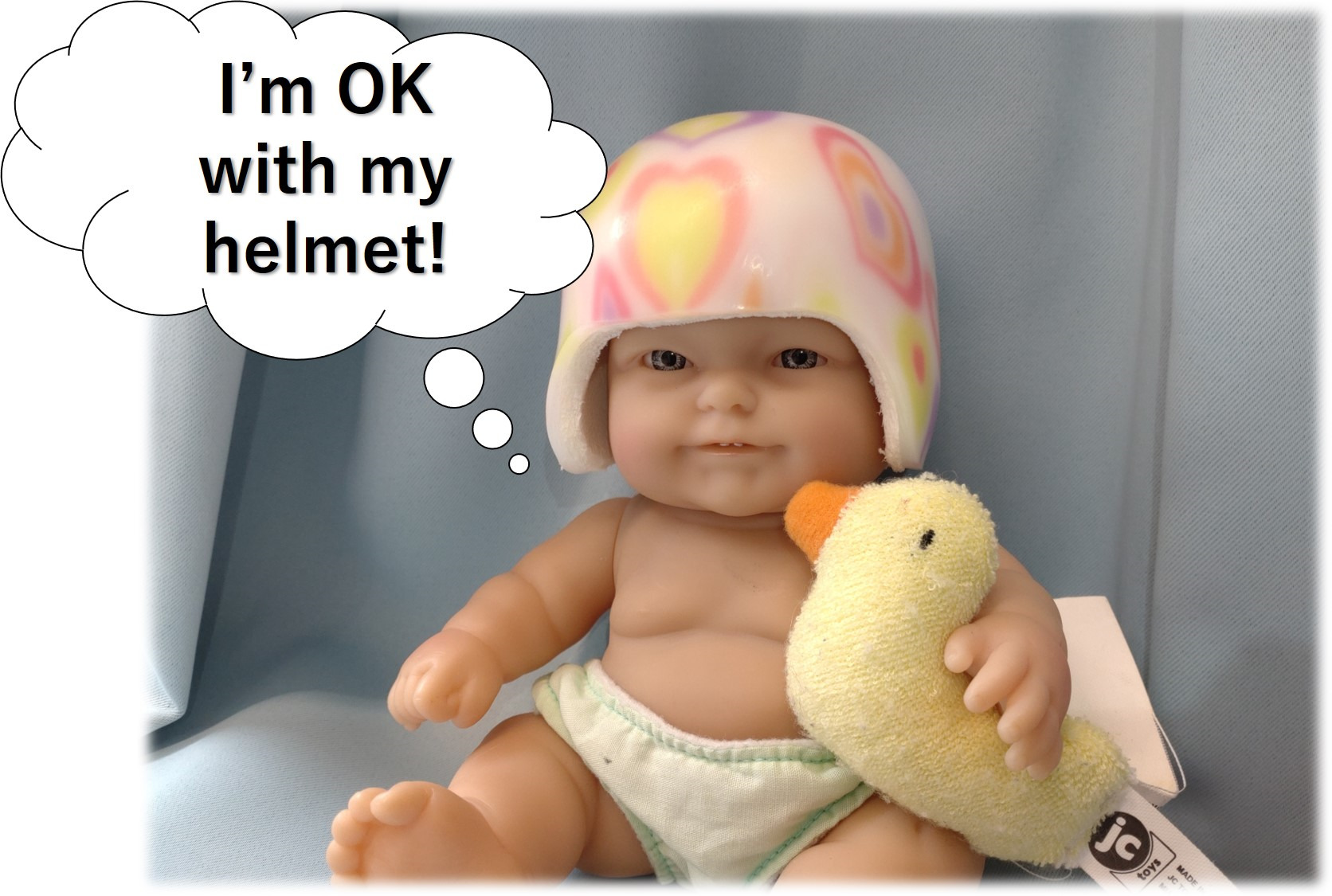
Q:What exactly does a doctor do during the examination? I’m worried that the baby might feel pain or discomfort.
A: The head shape specialty clinic is staffed by experienced pediatric neurosurgeons. The examination and diagnosis are performed with the family present to ensure that the baby is not anxious or uncomfortable. In some cases, a medical net with excellent stretchability may be used to observe the shape of the skull more closely. The main items observed are the degree of patency of the anterior and posterior fontanelles, the position of the ears, the degree of frontal protrusion, and mandibular displacement, among others. In addition, we will ask about birth weight, events during pregnancy, and changes in head circumference, so please bring your “Maternal and Child Health Handbook” to the examination.
Q:I feel that the hurdle to visit the hospital is high, and I am too busy to visit on weekdays due to balancing work and childcare.
A: Mitaka Hiro Clinic, on Saturday, Sunday, and holidays are open to the customers with a full reservation system. If you are worried about your baby’s head shape, feel free to just talk to our specialist doctor without any hesitation.
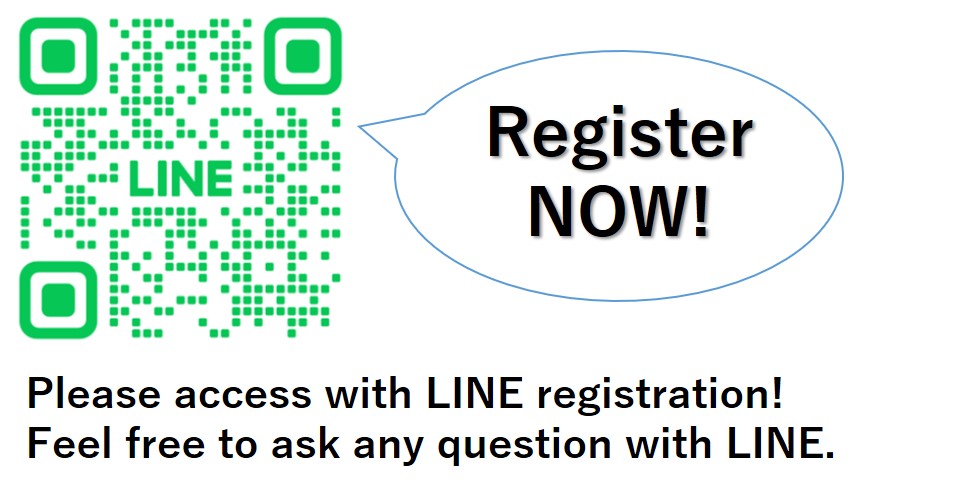

Board certified neurosurgeon
Board certified pediatric neurosurgeon
Specialized in brain tumor and pediatric neurosurgery.
He invented the world-first method to create hypothalamic neural tissue from embryonic stem cells. (PNAS,
2008), followed by invention of the method to create anterior pituitary tissues (Nature, 2011). He underwent
training in Toronto and Boston,and graduated from a North American fellowship program in three fields of
neurosurgery.
Specialties: neurosurgery, skull base surgery, pediatric neurosurgery, stem cell science,
neuroscience, oncology
Please fill in the form from the button.
